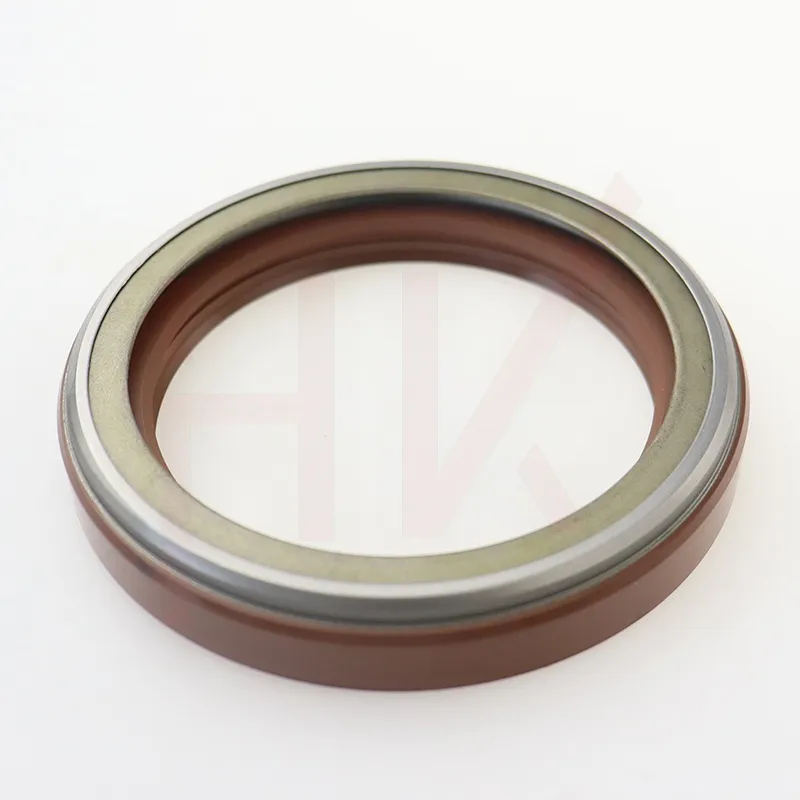Dec . 09, 2024 17:36 Back to list
Understanding the Role of Wiper Seals in Hydraulic Cylinders for Enhanced Performance
Understanding Wiper Seals in Hydraulic Cylinders
Hydraulic systems are integral to the operation of various machinery and equipment, enabling seamless movement and control of mechanical arms, lifts, and compactors, among others. At the heart of these hydraulic systems lie components such as hydraulic cylinders, which rely on a variety of seals to function efficiently. One crucial component that is often overlooked is the wiper seal.
What is a Wiper Seal?
A wiper seal, also known as a dust seal, is a type of seal used in hydraulic cylinders to prevent external contaminants such as dust, dirt, and moisture from entering the hydraulic system. It is typically located at the outer end of the cylinder, where the piston rod exits. The primary function of a wiper seal is to maintain the cleanliness of the hydraulic fluid and the internal components of the cylinder, ensuring smooth operation and extending the life of the equipment.
Importance of Wiper Seals
The importance of wiper seals cannot be overstated. Contaminants can lead to a variety of issues within hydraulic systems, including increased wear and tear on components, reduced efficiency, and potential system failures. By providing a barrier against dirt and moisture, wiper seals play a critical role in protecting the hydraulic cylinder and maintaining its operational integrity.
Moreover, wiper seals contribute to the overall safety of hydraulic systems. Contaminated hydraulic fluid can affect the performance of the entire system, potentially leading to catastrophic failures in heavy machinery. This not only poses safety risks but can also result in significant downtime and financial losses for businesses.
Types of Wiper Seals
wiper seal hydraulic cylinder

Wiper seals come in various styles and materials, each suited for specific applications. Common materials include polyurethane, rubber, and fluoropolymer. The choice of material often depends on factors such as the working environment, operating pressure, and temperature ranges.
There are several types of wiper seals, including
1. Standard Wiper Seals These are the most common and are suitable for general applications. 2. Heavy-Duty Wiper Seals Designed for tougher environments, these seals can withstand higher pressures and harsher contaminants. 3. Dynamic Wiper Seals These are used in applications where movement is constant, requiring materials that can endure regular wear. 4. Static Wiper Seals Utilized in applications where there is little to no motion, offering a durable barrier against contaminants.
Maintenance and Replacement
While wiper seals play a vital role in the longevity and efficiency of hydraulic systems, they are not immune to wear and tear. Regular inspection is necessary to check for signs of damage, such as cracks, splits, or deformation. If contaminants are repeatedly found in the hydraulic fluid, it may indicate that the wiper seal has failed and needs replacement.
Replacing wiper seals is an essential maintenance task that should be carried out with caution. Proper installation is crucial to ensure that the seal functions effectively and prevents contamination. Additionally, when replacing wiper seals, it is advisable to inspect other components of the hydraulic cylinder, as underlying issues may contribute to seal failure.
Conclusion
In conclusion, wiper seals are essential components in hydraulic cylinders that protect against external contaminants, ensuring the smooth operation and longevity of hydraulic systems. Understanding their role, types, and maintenance requirements can help operators enhance the efficiency of their equipment, safeguard against costly repairs, and promote a safe working environment. As industries continue to rely heavily on hydraulic systems, the importance of wiper seals in maintaining these systems will only grow. Regular attention to these seemingly small but critical components will ultimately lead to better performance and increased reliability in hydraulic machinery.
-
TCN Oil Seal Metal Ring Reinforcement for Heavy Machinery
NewsJul.25,2025
-
Rotary Lip Seal Spring-Loaded Design for High-Speed Applications
NewsJul.25,2025
-
Hydraulic Cylinder Seals Polyurethane Material for High-Impact Jobs
NewsJul.25,2025
-
High Pressure Oil Seal Polyurethane Coating Wear Resistance
NewsJul.25,2025
-
Dust Proof Seal Double Lip Design for Construction Equipment
NewsJul.25,2025
-
Hub Seal Polyurethane Wear Resistance in Agricultural Vehicles
NewsJul.25,2025
-
The Trans-formative Journey of Wheel Hub Oil Seals
NewsJun.06,2025
Products categories
















